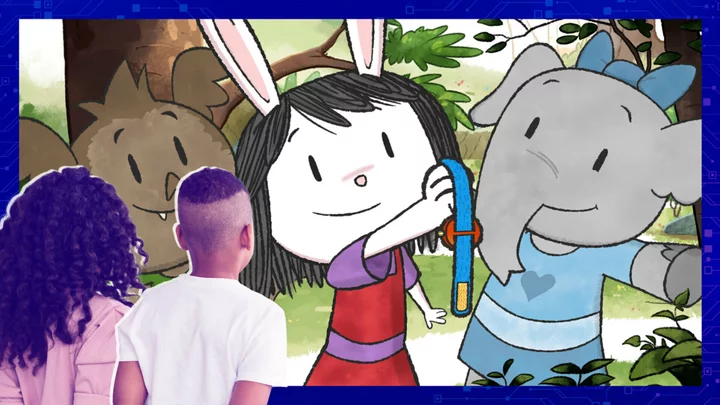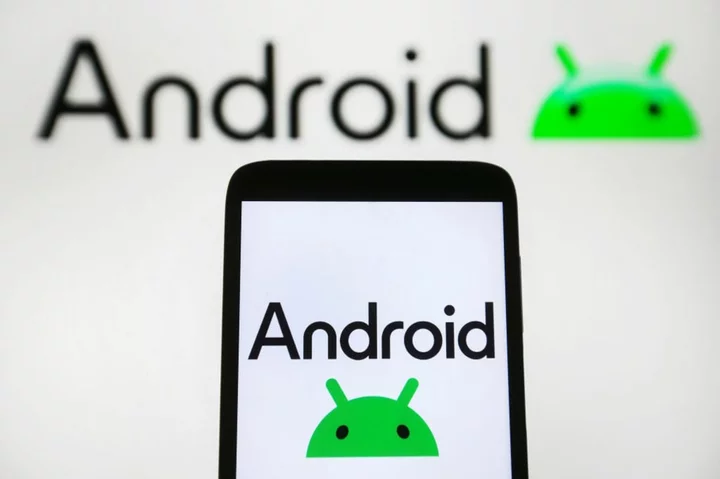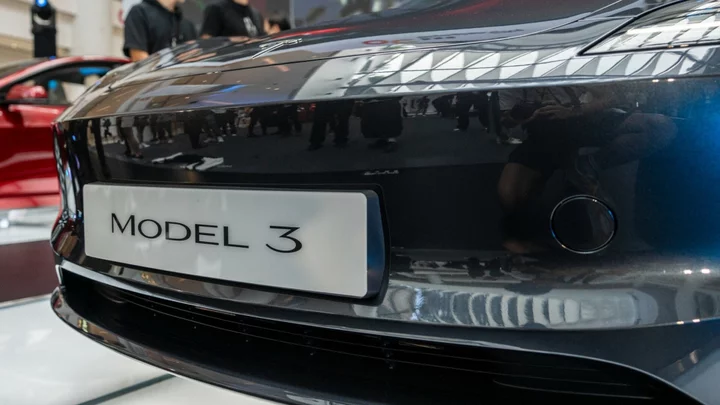From the personalized compassion shown in Mister Rogers' Neighborhood and Sesame Street, to the direct-to-camera problem-solving found in millennial favorites like Dora the Explorer and Blue's Clues, children's educational television presents the young viewer and the main character as equals. And in their mission to effectively engage young children on the path to greater learning, shows like these speak to kids like they're right there in the room, growing together.
This interaction model is a foundation for children's educational programming — in the age of online video streaming, the shows that pioneered it are more accessible to the public than ever before. But, in addition to these popularized classics, new kinds of interactive media are evolving. Children now have shows like PBS KIDS' Elinor Wonders Why and the upcoming Lyla in the Loop, featuring the latest generation of TV characters that model and invite inquisitive behavior. They exist in the same spirit as those before them, with one big difference: These characters will soon be able to respond with a whole new level of tech-assisted authenticity.
SEE ALSO: Canva launches free AI 'Classroom Magic' tools for educatorsInstead of the long, silence-filled pauses and static answers of characters like Dora, the new shows are going to fill those spaces with real-time conversation, guiding children through thought processes much like a caregiver or teacher would. In their creation, PBS KIDS is attempting to pioneer a new form of interactive educational media, centered on the technological potential of AI.
PBS KIDS will premiere Lyla in the Loop on Feb. 5, 2024, the channel's next major investment in children's programming which will later feature interactive episodes that incorporate AI-assisted technology to further engage young viewers.
Credit: PBS KIDSBut the initiative isn't a new undertaking spurred by current fervor around AI. In fact, as senior vice president and general manager of PBS KIDS Sara DeWitt explained, it's part of a longstanding goal — a guiding principle, of sorts — undertaken by the public broadcasting service since its inception.
New technologies building on old concepts
DeWitt has spent the last 15 years at PBS KIDS leading digital and technological innovation, including the channel's foray into AI-facilitated media. "I was focused on game development, on streaming video, but also on newer technologies and how we might innovate with them," she explained. "What are the best ways that we could extend PBS' mission to educate and engage kids using new technologies? When does the new technology give us an opportunity to do more and try to help kids learn more from the media?"
In the last decade, the organization has experimented with approaches like educational gaming and augmented reality. "This is, in a lot of ways, a continuation of what we've been doing all along, our trajectory of evaluating technology," explained Abby Jenkins, senior director of content for PBS KIDS. "We've done other kinds of experiments with voice inputs — we have some apps where kids can use their voice to control characters. We've used gesture-based games in the past. We try to use all the ways that kids can learn — by speaking, by interacting, by playing — and thinking how that can connect to the technology that's available."
AI tools are certainly a newly available and rapidly evolving technology, especially for early childhood education. But despite the novelty, a seed for shows like Lyla in the Loop can be dug up in the foundational studies that prompted the rise of one of PBS' major flagship programs, Sesame Street.
PBS was founded in 1969, following new calls for public educational media and funding streams established by President Lyndon B. Johnson's 1967 Public Broadcasting Act. Sesame Street launched that same year, inspired by a 1966 study by the show's cofounder Joan Ganz Cooney.
The report, titled "The Potential Uses of Television for Preschool Education," argued that a growing interest in bolstering early childhood education and closing achievement gaps should be met with an investment in educational television, circumventing the problems of educational funding for more schools and teachers. It also argued that researchers, educators, politicians, and parents themselves should reconsider the constraints of traditional education.
"One must also question the concept of difference between work and play that seems to prevail in traditional nursery school. A growing number of educators are coming to the conclusion that it is an artificial division, imposed by adults," wrote Ganz Cooney. "Based on my conversations with researchers and educators, television producers, representatives of other broadcast organizations, and on extensive research into available material that could be used on television, I believe it is both feasible and desirable to develop an imaginative, entertaining, and well-produced series of programs for young children, which would contain a high degree of educational content."
"With Sesame Street's launch, there was a real interest in how kids were learning from the show and how that could be boosted," DeWitt explained. In 1970, Educational Testing Service (ETS) researchers Samuel Ball and Gerry Ann Bogatz published an independent evaluation of the impact of the first year of Sesame Street on low-income inner-city communities, isolated rural areas, and even middle class suburban homes. The overwhelming positive findings — which found that consistent watching benefitted every demographic of viewer — would cement PBS' investment in creating simultaneously entertaining and educational media.
DeWitt explained that this led to even deeper study of television viewing in the 1980s and 1990s, predominantly focused on the impact of parent and child interactions during a show, also known as co-viewing. "What happens when a parent watches television with a kid? But more specifically, what happens when a parent has a conversation about what the child is watching?"
As researchers continued to explore the impact of co-viewing in the 2000s and 2010s, most of the studies found resoundingly positive learning results, as well. DeWitt explained that co-viewing was found to advance both "hard" and "soft" skills, from literacy and numbers to social skills like empathy building.
"You've kind of probably seen this research play out in different ways," she said. "There are several shows launched for preschoolers where the main character will stop and look directly to camera, break that fourth wall, and then speak and leave a pause — this kind of pseudo- interactivity. It meant that kids might talk back to the television, and based on the idea that if you can get kids engaged, then their learning gains will be greater.
"Where we are right now though, is that the technology has caught up to a point where the show can actually listen to the child and potentially engage in conversation."
And that's where the 21st century exploration of AI kicks in.
Creating a scientific approach to AI in children's media
In 2019, PBS KIDS was awarded a National Science Foundation grant to study the impact of interacting with an AI-powered television character on children's science learning. The organization teamed up with researchers at University of California, Irvine; Harvard University; the University of Michigan; and the Basque Center on Cognition, Brain, and Language to conduct the exploratory study, which was published this year.
The team integrated AI into three, 10-minute episodes of the scientific preschool show Elinor Wonders Why, and screened them with a cohort of child viewers in order to provide kid-focused feedback for the AI's design. Then, the researchers tested children's reception of the AI interactive format against traditional television viewing and pseudo-interactive viewing (those pause-filled shows, like Daniel Tiger's Neighborhood.)
Credit: PBS KIDS"From that project, we found that it's true that interacting with AI could actually lead to better learning gains, compared to a pseudo-interactive condition," explained Ying Xu, an assistant professor of learning sciences and technology at University of Michigan's School of Education and a head researcher and co-principal investigator for the research project.
Following the initial study, the National Science Foundation awarded them a second developmental grant, with the goal to eventually release the AI-assisted episodes to the public and scale the technology for future PBS KIDS series.
Xu's team is still currently in a research phase, pinning down the different character responses and permutations for future Lyla episodes in collaboration with PBS KIDS' curriculum experts and showrunners.
"Our goal around engagement and pulling kids into the experience is that we want kids to feel super smart and empowered, because they have an opportunity to engage in a dialogue with characters," explained Jenkins. "Kids have an opportunity to offer their own ideas and express their thinking out loud, so there's a range of responses…as if they're brainstorming with the characters."
AI-assisted characters on the screen
PBS KIDS' characters' AI backing is, importantly, not tied to generative AI systems — that means that the AI-facilitated responses from Elinor or Lyla aren't pulled from expansive data sets built from large language models, like those offered by popular chatbots. Instead, the interactions are devised by researchers, show writers, and the program's educational advisers long before the episode airs, based on the overarching theme of the episode and specific plot points designed to engage children.
Conversational threads are informed by those early research trials with real children and their speech patterns, Xu explained, and are designed to acknowledge the varied capabilities and responses of viewers. For example, if a child is struggling to respond to a question or understand a concept, the AI characters can engage in a back-and-forth exchange, using follow-up questions that prompt children toward greater understanding of the concept at hand.
Both Elinor Wonders Why and Lyla in the Loop are STEM-centered shows. Developed for preschool-aged children, Elinor Wonders Why focuses on the process of scientific inquiry. Lyla in the Loop, designed for slightly older kids, focuses on computational thinking, the patterns and sequences that are the building blocks of computer science, DeWitt explained. These topics make designing and testing responses a little bit easier, but they will also serve an additional purpose: priming the next generation with the skills to understand, and critically engage with, the AI itself.
Credit: PBS Kids"I do think this is technology that could be extended to other learning spaces, certainly literacy and numbers, and I think it'd be really interesting to take it into social skills at some point. But, right now, we're thinking about the best way to set kids up for future success around technologies like this," she said.
The ongoing research is also looking into how AI characters impact child psychology — like the ways children form bonds with fictional characters — and how this voice-only technology can be expanded to multilingual viewers and children with disabilities.
"We know that kids form some sort of relational connections with media characters even without this AI," said Xu. "We also thought about how we introduce these interactive episodes to the kids, just to be careful not to over-anthropomorphize the main character."
Jenkins explained that the dialogue is intentionally crafted to not be open-ended, constrained to the dialogue and plot of episodes. "We are really careful about that [child-character] relationship, and not creating a sense that you could ask this character anything. We set it up with some rules and guidance, and the questions are specific enough to guide the conversation from episode to episode."
For now, both of the shows will only be available digitally, with the thought that families will access the shows via a tablet or mobile device and thus allow the content to reach more people in an age of streaming. They'll utilize the device's audio input and an AI voice assistant — the team used Google's Dialogflow for tests of Elinor Wonders Why — to listen to children's responses in real time and select the appropriate line of dialogue to continue the conversation.
As Xu explains in the report, the interaction is not much more different than the way children might already engage with AI-powered tools in their homes, like voice-assistants on Google Home devices or an Amazon Alexa and internet-enabled toys.
DeWitt says Smart TVs may be able to handle the technology in the future, as well. And, addressing growing AI privacy concerns, none of PBS KIDS' AI-assisted programs collect any data or voice recordings from child participants.
Where an AI-filled future should lead us
Despite the emphasis on kid-driven responses while watching these shows, PBS KIDS doesn't expect parents to be replaced by AI interactivity. Instead, as DeWitt said, PBS KIDS envisions AI characters helping to model even greater co-viewing behavior among parents themselves.
"When their kids ask big questions about science topics, which kids do, the best way to continue to engage your child in that conversation isn't actually just giving them the answer, or just saying 'I don't know.' It actually is to say, 'I'm not really sure about that. Why do you think it happened?' That is going to be really powerful for kids' learning over time, if the parent is engaging in those kinds of conversations."
As Jenkins explained, Elinor Wonders Why and Lyla in the Loop use developing technology to harness the way children naturally play — like constant narration and imaginative dialogue — and guide parents to capitalize on that in learning opportunities beyond television, as well.
Nearly 60 years ago, the Public Broadcasting Act paved the way for a deeper investment in new modes of education. The law acknowledged that incorporating new technologies (at the time, television) meant taking a calculated risk: "It is in the public interest to encourage the development of programming that involves creative risks and that addresses the needs of unserved and underserved audiences, particularly children and minorities."
In practice, creative risks meant something different for researchers during the mid-century, but innovations in childhood education access continue to evolve by embracing the potential power of advanced technologies – and not jeopardizing safety in the process.
"Kids' media, in general, is always changing. So for us who have been doing this a while, this is nothing new. We've been with young children as technology has evolved…and we feel like it's extremely important to meet kids where they are. But we also want to get out ahead of it, so that we can ensure that kids' needs and voices are part of that conversation," Jenkins said.
"These technologies were not designed for kids, they were designed for a range of interests and audiences. Going back to the origins of public media, Sesame Street, and where PBS KIDS began, we're taking a careful look at how to serve kids' needs and uphold their interests as the media and the technology changes."
Want more Social Good stories in your inbox? Sign up for Mashable's Top Stories newsletter today.







![Costco July 4th hours: Is Costco open Fourth of July? [Updated July 2023]](/i/c/2464f988-2247-b31c-d5c0-534a3f7afd3c.webp)

